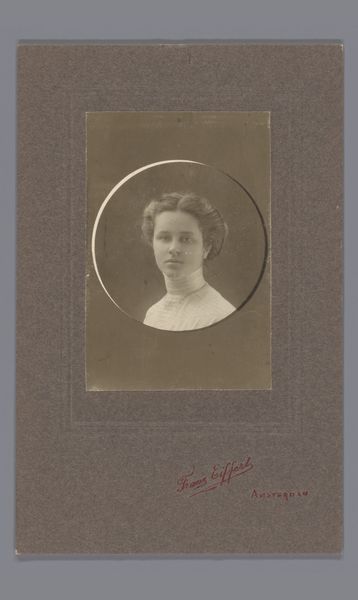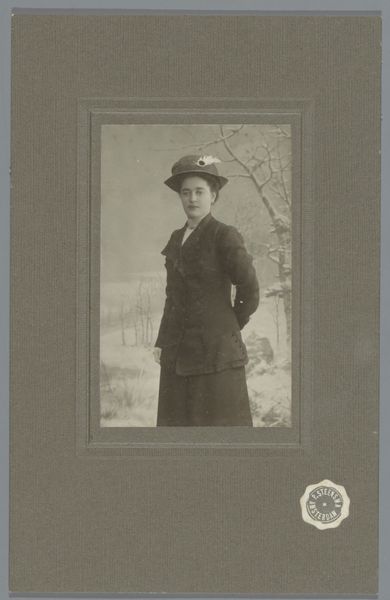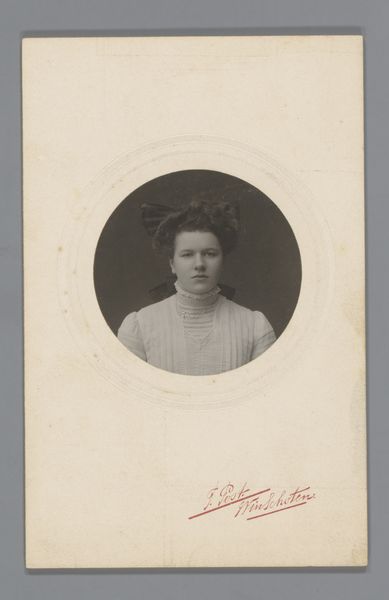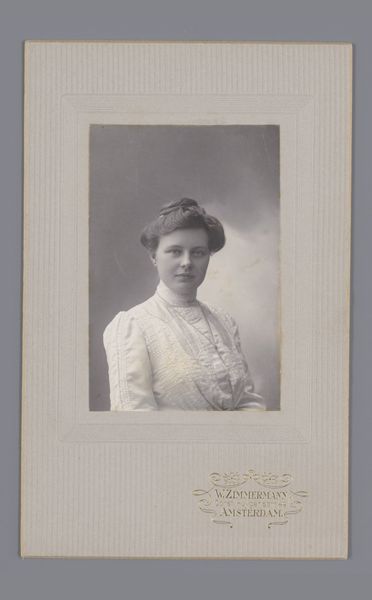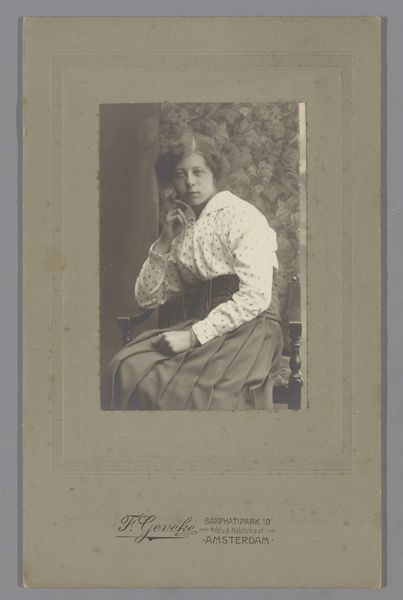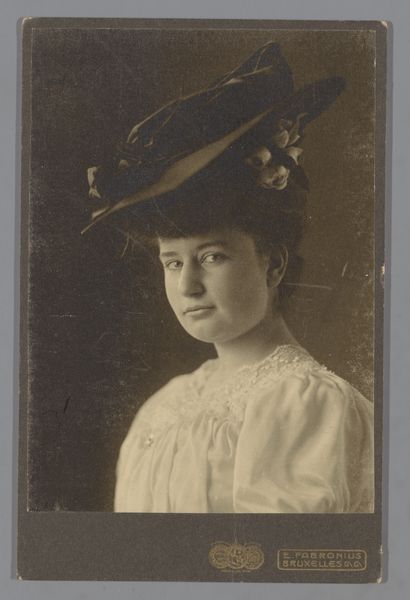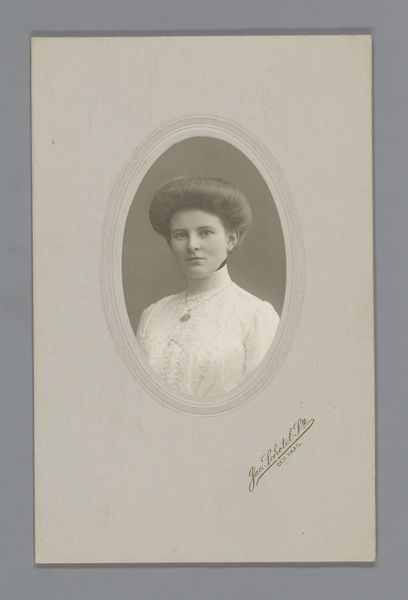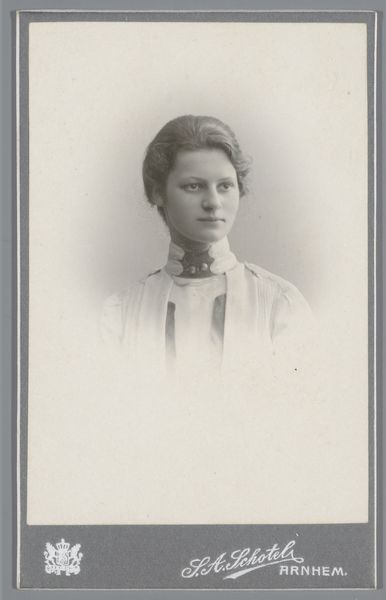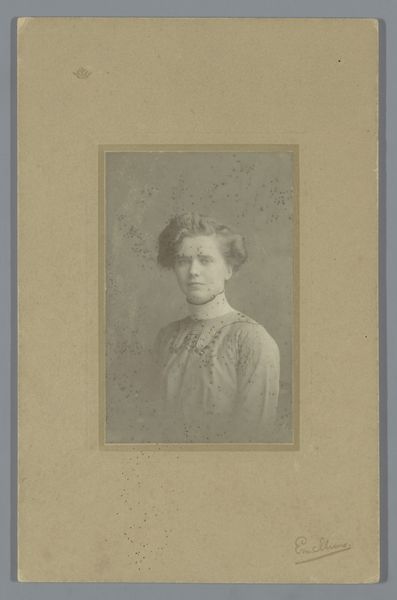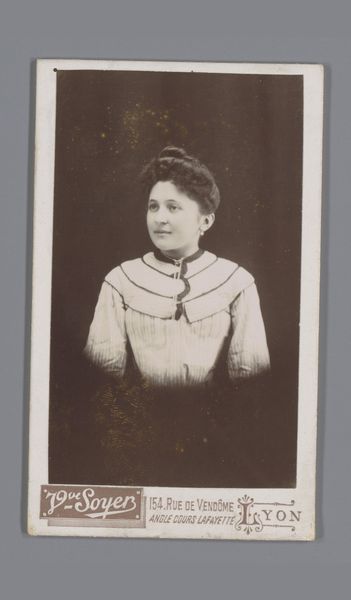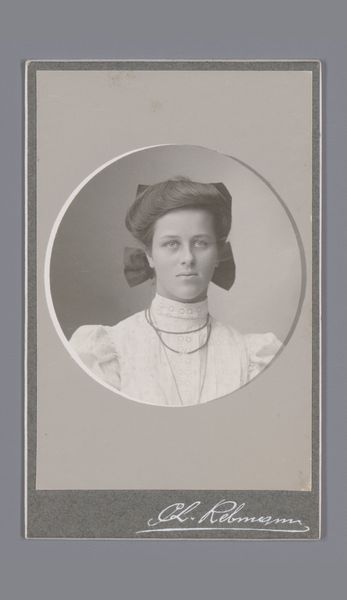
print, photography
#
portrait
#
self-portrait
#
pictorialism
# print
#
photography
#
modernism
#
realism
Dimensions: height 168 mm, width 106 mm
Copyright: Rijks Museum: Open Domain
Curator: Here we have a portrait, a photographic print entitled “Portret van Johanna Geertruida Jonker,” made in 1911 by Franz Eiffert. It resides here at the Rijksmuseum. Editor: It's immediately striking how soft the focus is. It gives the photograph a dreamlike quality, almost as if it were painted rather than captured. There's a real delicacy to the tones. Curator: Yes, Eiffert very consciously aligns himself here with the pictorialist movement. Photography at the time was still fighting for legitimacy as fine art, and photographers would use soft focus and other manipulations to make their work look less like simple documentation and more like painting. We can see this aesthetic echoed in salon culture broadly and its attendant obsession with subjective impressions. Editor: And consider the composition itself! The woman’s gaze, directed off to the left but also somehow holding you, coupled with the shadow play on her face cast by the large hat, creates a subtle tension. What could she be seeing? What might happen next? The photograph isn’t a passive object, but rather implies both a past and a future. Curator: And, of course, she represents the emerging modern woman of the era, even within the restricted modes of visuality allowed at the time. Though formally posed, one imagines she's an active agent of change rather than a mere subject. It signals changes in social life and status being pursued at the time, an aspirational vision promoted within bourgeois social circles of Amsterdam. Editor: That very dark, wide-brimmed hat she wears also is quite central to the overall visual schema. It is, in its very darkness, contrasted against her pallid skin to draw our gaze up to her face. This all brings one back to the play of light. It has this quality as if it’s trying to transcend the material constraints of its medium. Curator: Absolutely. Photography stepped out of its older conventions in this period. Viewing it in terms of social and historical context makes all the aesthetic choices more intelligible and provides a better perspective of the culture of that moment. Editor: A compelling argument for how art can both reflect and transcend the materials and history from which it comes! Curator: Indeed. Thanks for providing this analysis!
Comments
No comments
Be the first to comment and join the conversation on the ultimate creative platform.
